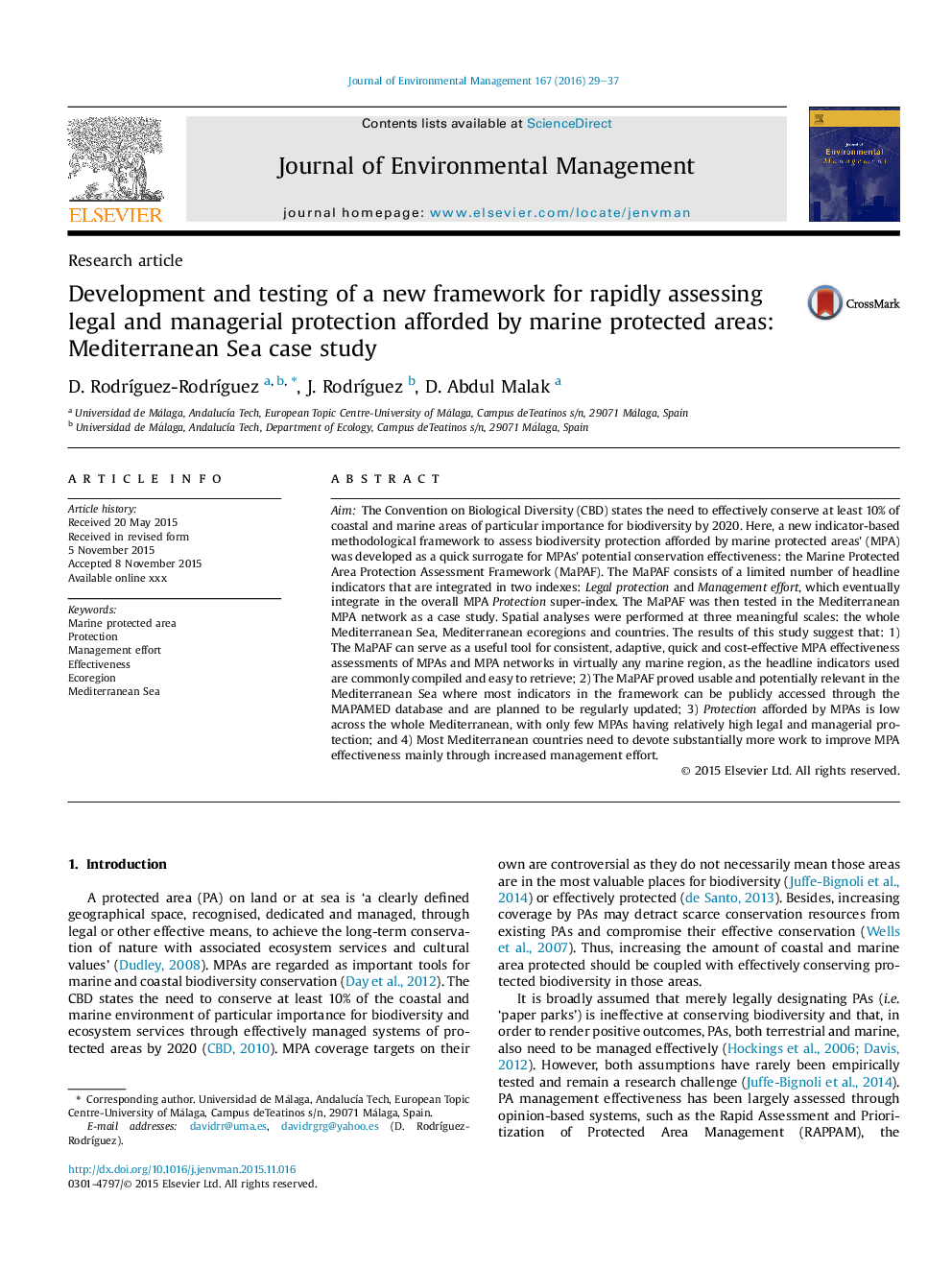| Article ID | Journal | Published Year | Pages | File Type |
|---|---|---|---|---|
| 7481109 | Journal of Environmental Management | 2016 | 9 Pages |
Abstract
The Convention on Biological Diversity (CBD) states the need to effectively conserve at least 10% of coastal and marine areas of particular importance for biodiversity by 2020. Here, a new indicator-based methodological framework to assess biodiversity protection afforded by marine protected areas' (MPA) was developed as a quick surrogate for MPAs' potential conservation effectiveness: the Marine Protected Area Protection Assessment Framework (MaPAF). The MaPAF consists of a limited number of headline indicators that are integrated in two indexes: Legal protection and Management effort, which eventually integrate in the overall MPA Protection super-index. The MaPAF was then tested in the Mediterranean MPA network as a case study. Spatial analyses were performed at three meaningful scales: the whole Mediterranean Sea, Mediterranean ecoregions and countries. The results of this study suggest that: 1) The MaPAF can serve as a useful tool for consistent, adaptive, quick and cost-effective MPA effectiveness assessments of MPAs and MPA networks in virtually any marine region, as the headline indicators used are commonly compiled and easy to retrieve; 2) The MaPAF proved usable and potentially relevant in the Mediterranean Sea where most indicators in the framework can be publicly accessed through the MAPAMED database and are planned to be regularly updated; 3) Protection afforded by MPAs is low across the whole Mediterranean, with only few MPAs having relatively high legal and managerial protection; and 4) Most Mediterranean countries need to devote substantially more work to improve MPA effectiveness mainly through increased management effort.
Related Topics
Physical Sciences and Engineering
Energy
Renewable Energy, Sustainability and the Environment
Authors
D. RodrÃguez-RodrÃguez, J. RodrÃguez, D. Abdul Malak,
